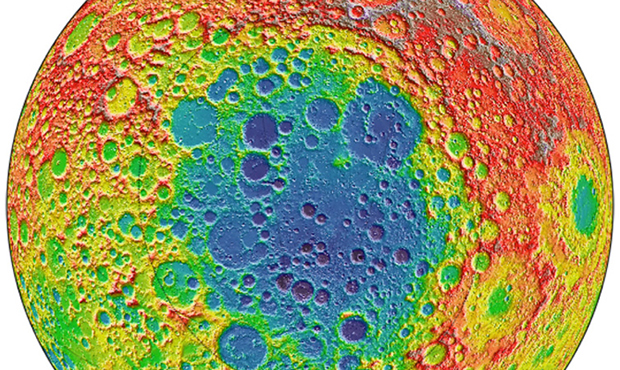Large impactor identified beneath surface of the moon
Jun 26, 2019, 2:00 PM

(Getty Images/Patrick Smith)
(Getty Images/Patrick Smith)
The moon is a very interesting object in our night skies and has much folklore attached to it.
The recent full Strawberry Moon is just one of the great full moons of the year and offers us a great opportunity to explore Earth’s nearest neighbor.
Additional attention is being focused on the moon in July as we celebrate the 50th anniversary of the Apollo 11 manned mission.
The moon is a rather small but important object in our solar system. The moon is small, with a diameter of 2,159 miles wide.
Putting that in relative terms, if one edge of the moon were placed near New York City, the other edge of the moon would reach Phoenix.
The origin of the moon is also very fascinating, as current theory tells us that the moon may have evolved as a preplanet, with material from the original solar cloud and later
was captured by the gravity of Earth.
Simply stated, the moon probably did not evolve out of material coming out of the earth.
Recent research on the evolution of the moon tells us about a large asteroid-like body that slammed into the moon billions of years ago in the far southern pole region.
On a moon map, we know this area as the South Pole-Aitken region.
This is a depression on the lunar surface which is some 1,250 miles in diameter. It is not easy to see with current spacecraft images, as the region has been bombarded by additional smaller meteor and minor asteroid impacts.
In total, the region is thought to have been hit by an asteroid-like body 200 kilometers in diameter.
The most amazing part of this new theory is that the object may still be embedded in the mantle of the moon.
This is the same region of the moon that has some of the lowest temperatures in the entire solar system and may be a good base for future moon exploration and crews.
Here is a look at what this basin looks like from spacecraft images:

(NASA Image)
This large metallic object that may still be somewhat intact under the mantle of the moon is amazing, as this may have some effect on the gravity that exists on the lunar surface.
Variations in the gravity of the moon have been observed by the Apollo astronauts and they are known as lunar mascons.
Here is a look at the variable gravity on the surface of the moon:

(Wikimedia Commons Image)
The moon has many regions of variable gravity and there are also some amazing discoveries made about the moon, when it comes to moon quakes and how the moon reacts when it is hit by small asteroids and meteors.
When a moon quake occurs, the moon has been known to ring like a bell for periods of an hour or so.
Does this mean that the interior of the moon has large hollow regions in the mantle?
No one knows for sure, but some have speculated that the moon is really an artificial satellite and was later captured by Earth.
Here is what an artificial moon might look like:

(Wikimedia Commons Photo)
For now, all eyes to the skies as we look to the moon as the next location for a manned habitat for exploration, maybe as early as 2030.
June provides us with some amazing sights in our Arizona skies, as well as Jupiter, rising in the southeast sky at sunset.
To print your own monthly star chart, click here
To view satellites/dates/times of passage, click here.
Listen to the Dr. Sky Show on KTAR News 92.3 FM every Saturday morning at 3 a.m.








